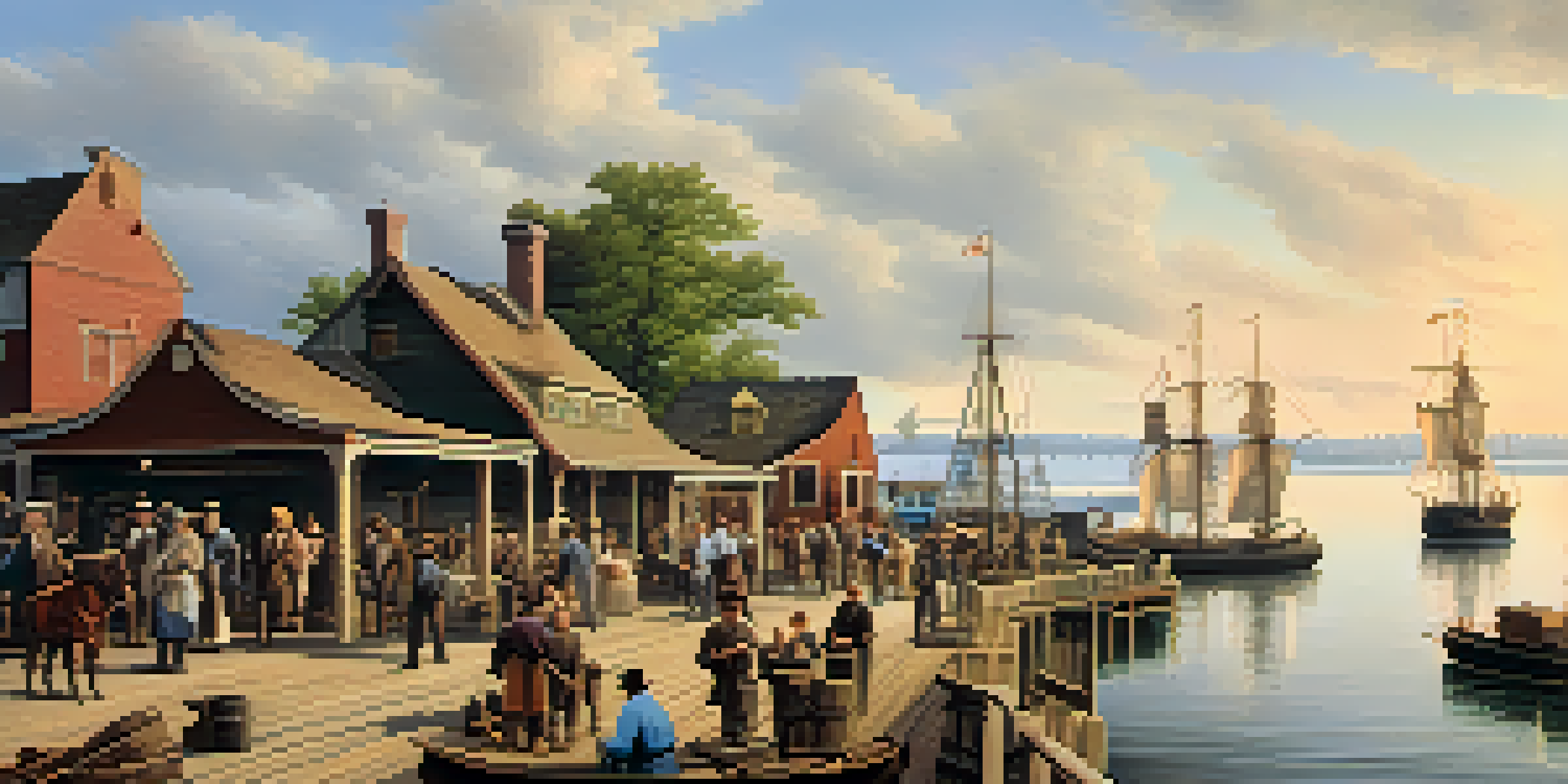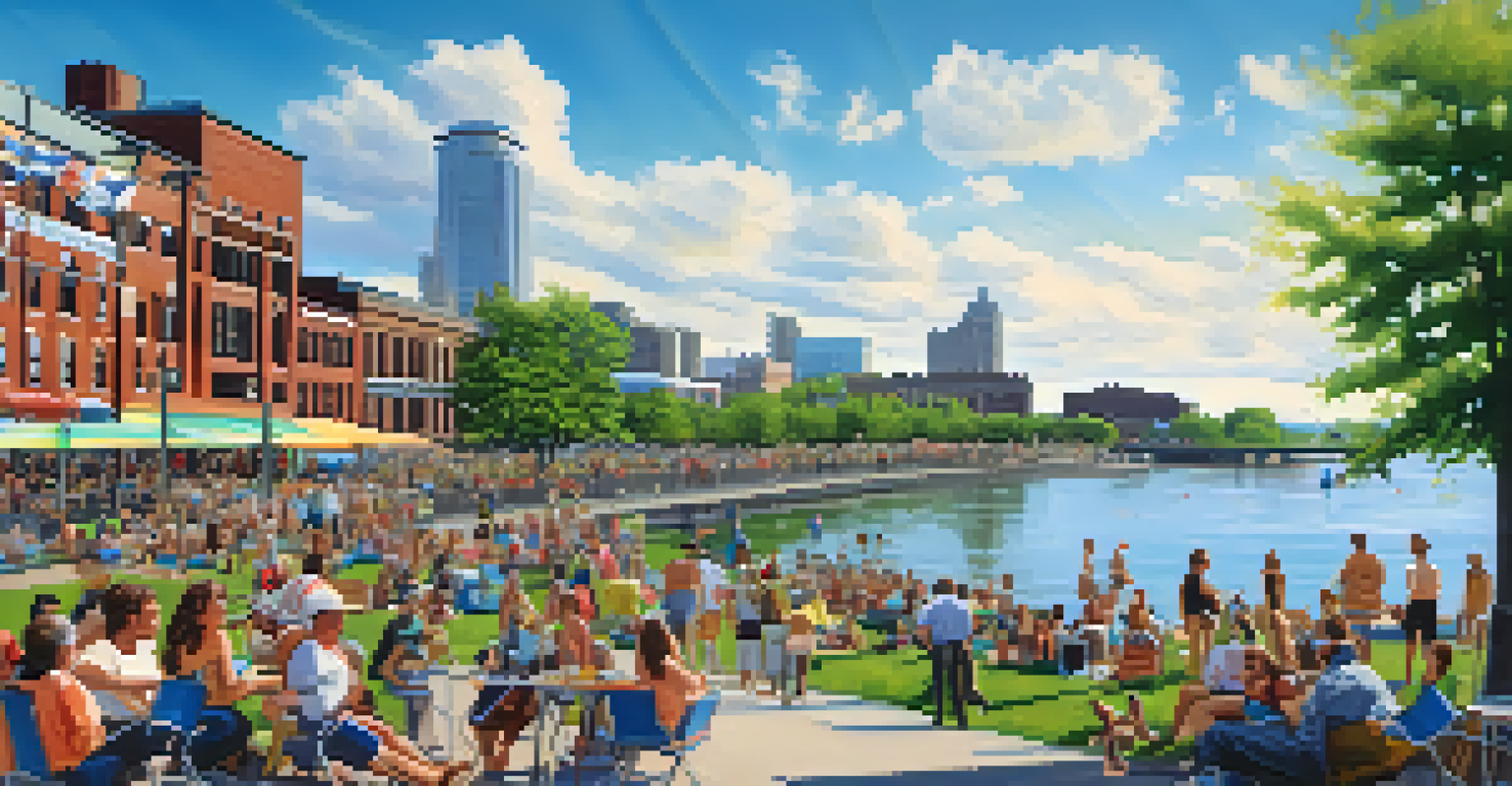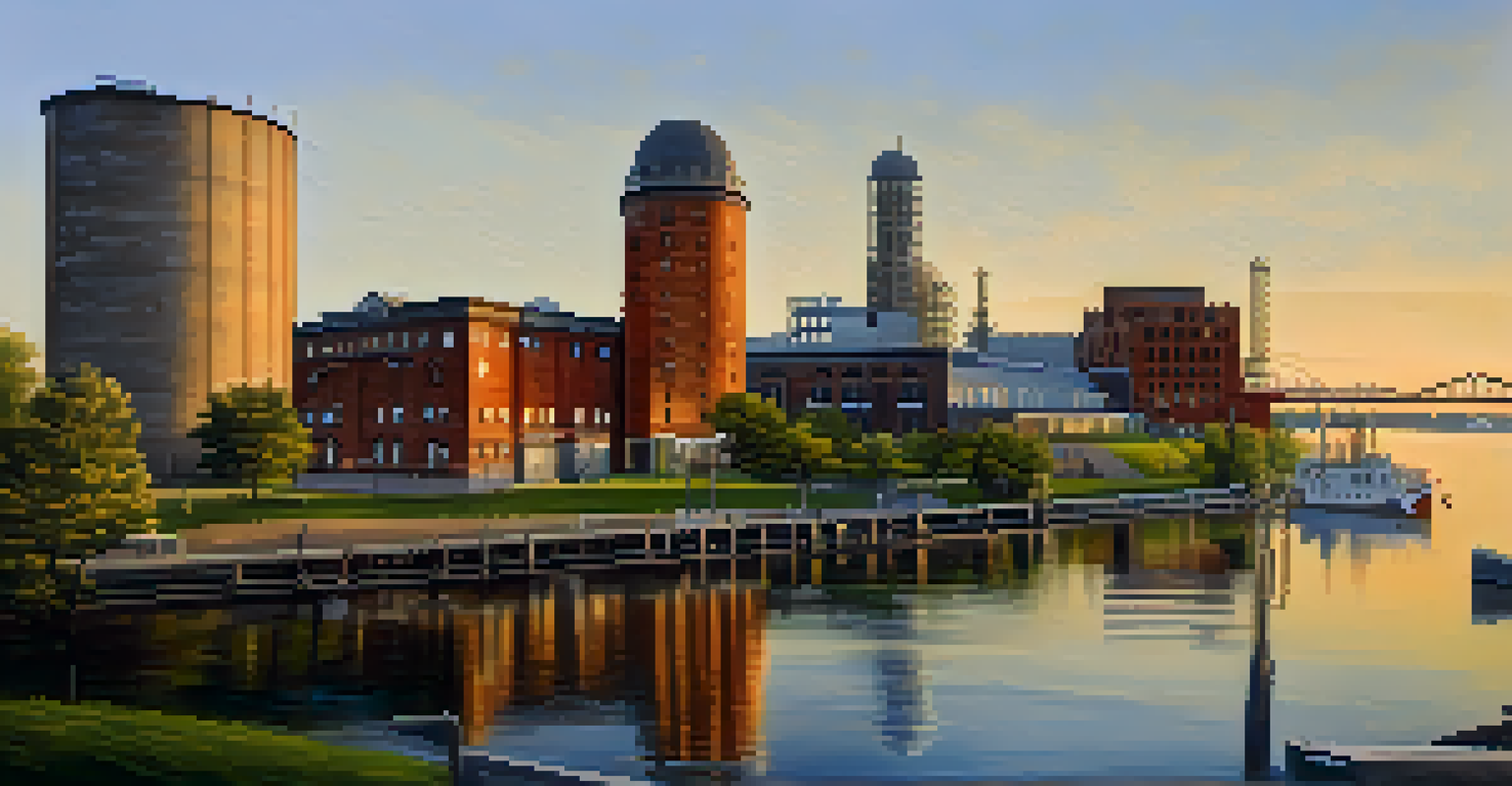The Evolution of Buffalo's Waterfront: A Historical Overview

The Early Days: Buffalo's Waterfront Origins
Buffalo's waterfront has a storied history that dates back to its founding in the early 19th century. Initially, it served as a vital trading post due to its strategic location along Lake Erie. The natural harbor attracted merchants and settlers, establishing Buffalo as a bustling hub for commerce and navigation.
The waterfront is not just a place; it is a story of the city's identity and resilience.
As the city grew, so did its waterfront activities. The Erie Canal, completed in 1825, further transformed Buffalo into a key transportation artery, linking the Great Lakes to the Atlantic Ocean. This development brought an influx of goods and people, setting the stage for Buffalo's economic expansion.
However, as the industry flourished, the waterfront’s natural beauty began to fade. Factories and shipping docks replaced scenic views, leading to environmental concerns that would shape future redevelopment efforts. The early days of Buffalo’s waterfront laid the groundwork for its complex history.
Industrial Boom: Waterfront as a Powerhouse
The late 19th and early 20th centuries marked an industrial boom for Buffalo, with the waterfront at the heart of this transformation. Shipyards, grain silos, and manufacturing plants lined the shores, creating jobs and driving economic growth. Buffalo became known as the 'City of No Illusions' for its gritty, hardworking ethos.

This period also saw the rise of the steel and grain industries, which thrived due to the shipping capabilities of the waterfront. The bustling docks were filled with ships, and the sound of clanking machinery echoed through the air. It was a time when the waterfront represented the promise of prosperity.
Buffalo's Waterfront: A Historical Journey
Buffalo's waterfront has evolved from a vital trading post in the 19th century to a center of industrial growth, facing challenges of decline, and now experiencing a renaissance.
However, this rapid industrialization came with its downsides. Pollution and neglect began to take their toll on the waterfront’s environment, leading to a decline in public access and recreational opportunities. The industrial boom, while beneficial economically, left a complicated legacy for future generations.
Decline and Neglect: The Struggles of the Waterfront
As industries began to migrate away in the mid-20th century, Buffalo's waterfront fell into a state of decline. Factories closed, and the once-bustling docks became silent and neglected. With fewer jobs and diminishing economic activity, the waterfront area faced significant challenges.
A city is not just what it looks like; it’s how it feels to its people.
Community members expressed concern over the deteriorating conditions, and many felt disconnected from the waterfront they once cherished. The lack of investment led to a perception of the area as unsafe and uninviting, discouraging public use and exploration.
This period of neglect highlighted the need for revitalization and reimagining the waterfront. Activists and local leaders began advocating for change, emphasizing the importance of restoring access to the waterfront for the community and preserving its historical significance.
A Vision for Renewal: Planning the Waterfront’s Future
In the late 20th century, a renewed interest in Buffalo's waterfront emerged, fueled by a desire to reclaim the area for public use. Urban planners and community advocates began developing comprehensive plans focused on revitalizing the waterfront. Their vision aimed to transform neglected spaces into vibrant parks and recreational areas.
The Buffalo Waterfront Development Plan was initiated to guide this transformation, incorporating green spaces, walking paths, and public amenities. This collaborative approach sought to create a waterfront that not only honored its industrial past but also embraced sustainable development for the future.
Revitalization and Community Focus
Efforts to revitalize the waterfront emphasize community engagement, sustainability, and transforming neglected areas into vibrant public spaces.
Community engagement played a crucial role in this planning phase, as residents shared their visions for a more accessible and inviting waterfront. The emphasis on inclusivity and environmental stewardship laid the groundwork for a waterfront that would serve all Buffalonians.
The Waterfront Renaissance: Modern Developments
The 21st century has ushered in an exciting renaissance for Buffalo's waterfront, marked by significant redevelopment projects. Key initiatives have transformed derelict sites into lively public spaces, such as Canalside, which has become a focal point for entertainment and recreation. The area's revitalization has reinvigorated community pride and engagement.
With new parks, event spaces, and commercial ventures, the waterfront now attracts residents and tourists alike. Activities such as concerts, festivals, and outdoor sports have breathed new life into the area, fostering a sense of community and connection to Lake Erie.
However, the transformation is not just about aesthetics; it also prioritizes environmental sustainability. Efforts to restore natural habitats and improve water quality reflect a commitment to preserving the waterfront for future generations. Buffalo’s waterfront renaissance embodies the spirit of resilience and renewal.
Cultural Significance: A Hub for Community Engagement
As Buffalo's waterfront continues to evolve, it has become a cultural hub that celebrates the city's rich heritage. Art installations, public performances, and community events are now common features, showcasing local talent and fostering connection among residents. The waterfront serves as a canvas for creativity and expression.
Organizations and artists have collaborated to enhance the waterfront experience, creating spaces that reflect Buffalo's unique identity. Initiatives like the Buffalo Waterfront Arts Festival highlight the area's cultural significance, drawing diverse audiences and promoting local businesses.
Cultural Hub for Local Engagement
The waterfront has emerged as a cultural hub, celebrating Buffalo's heritage through art, performances, and community events that foster connection and pride.
This cultural engagement has transformed the waterfront into a gathering place where people come together to celebrate their community. The vibrancy of the waterfront is a testament to the power of place-making and the importance of cultivating a shared sense of belonging.
Looking Ahead: The Future of Buffalo's Waterfront
As we look to the future, Buffalo's waterfront holds immense potential for further growth and development. Ongoing projects aim to enhance accessibility, promote economic opportunities, and preserve the waterfront's natural beauty. The commitment to sustainability will continue to guide development efforts.
Community input remains a vital component of planning, ensuring that the waterfront evolves in a way that reflects the needs and desires of its residents. Engaging local voices will help shape a waterfront that serves as a source of pride and enjoyment for all Buffalonians.

Ultimately, the future of Buffalo's waterfront is a story of resilience, transformation, and hope. By drawing on its rich history while embracing innovative solutions, the waterfront can thrive as a dynamic space that honors its past and celebrates its community.